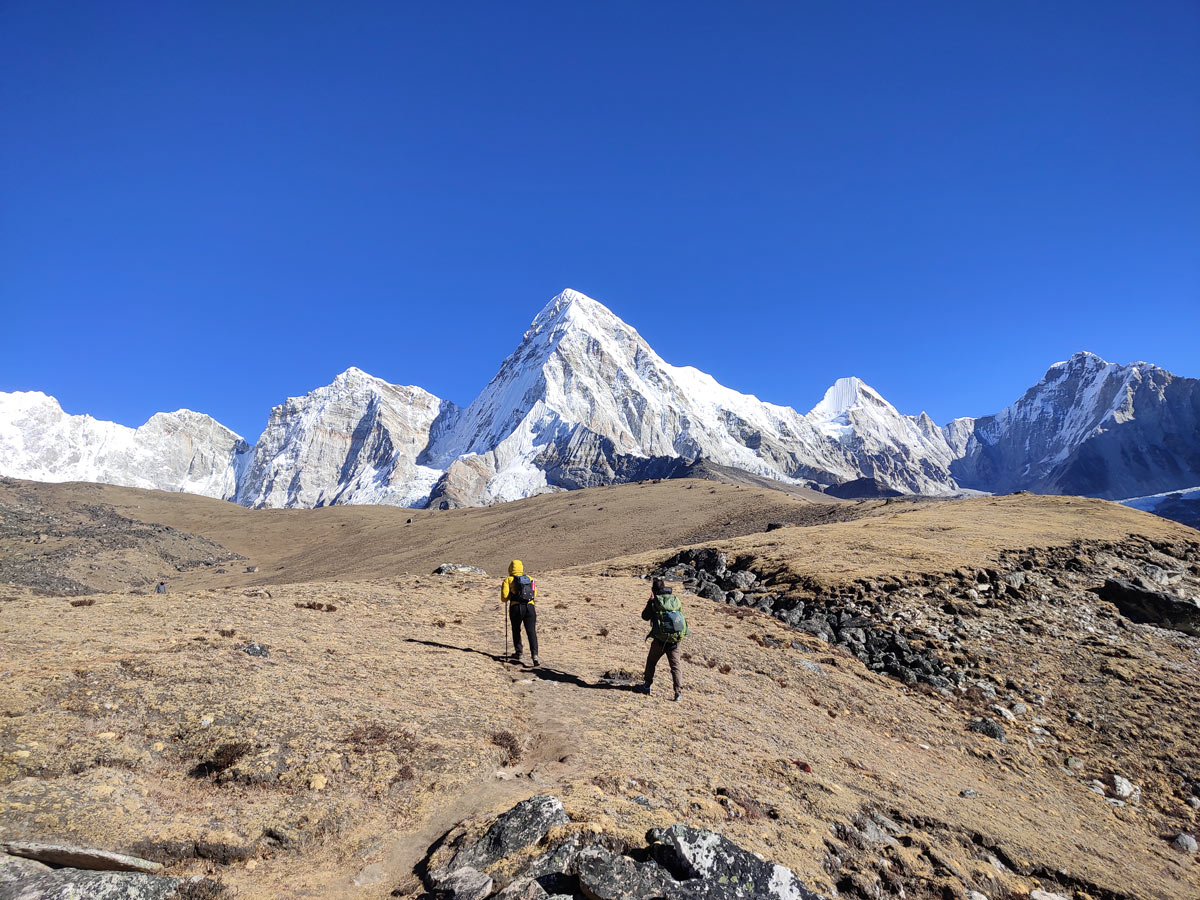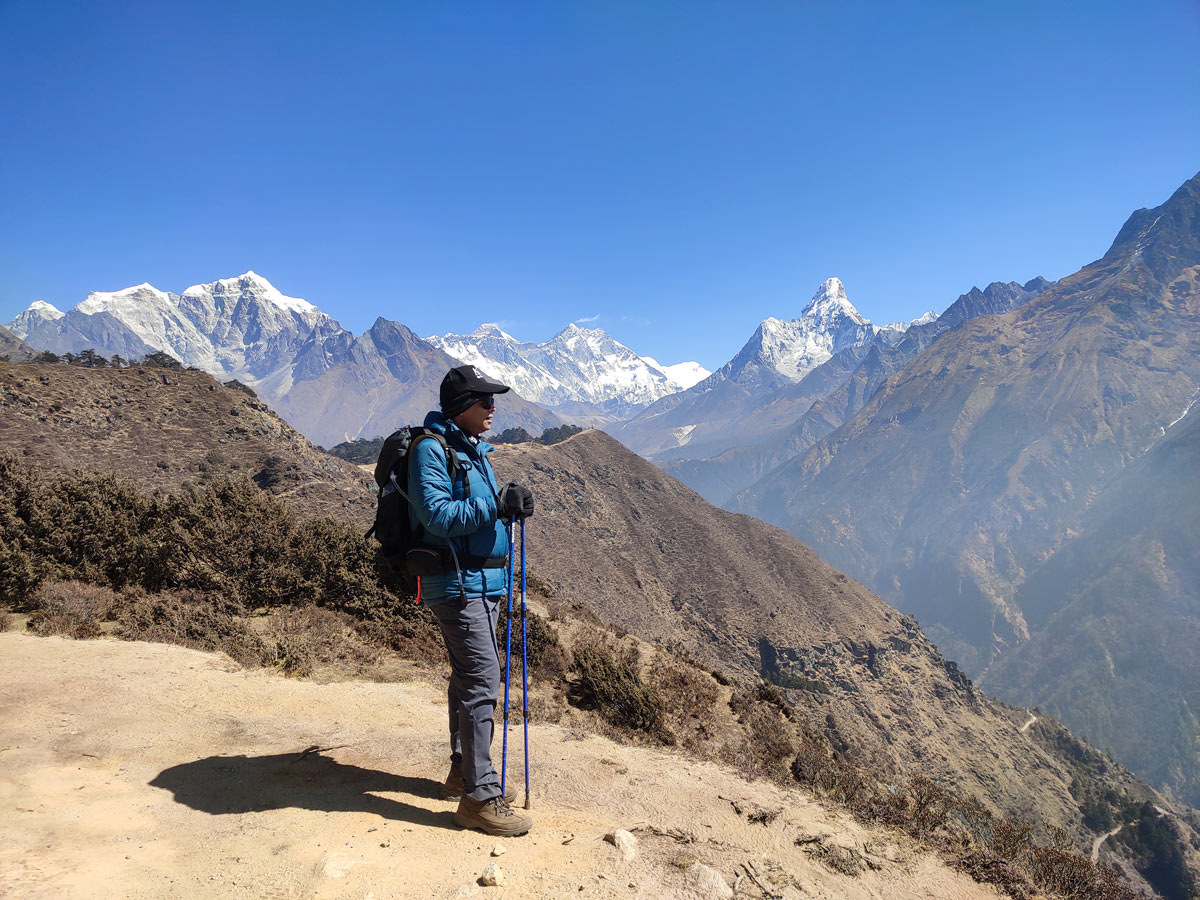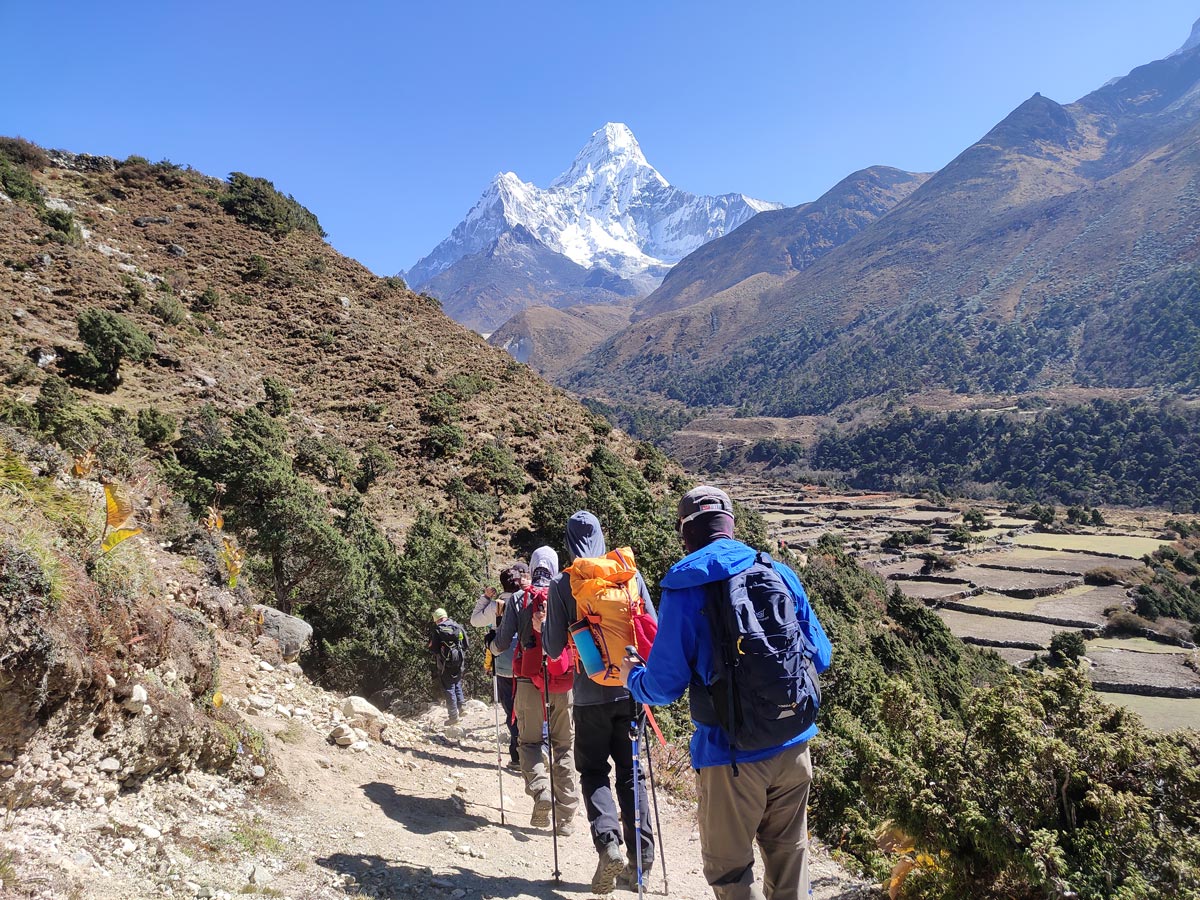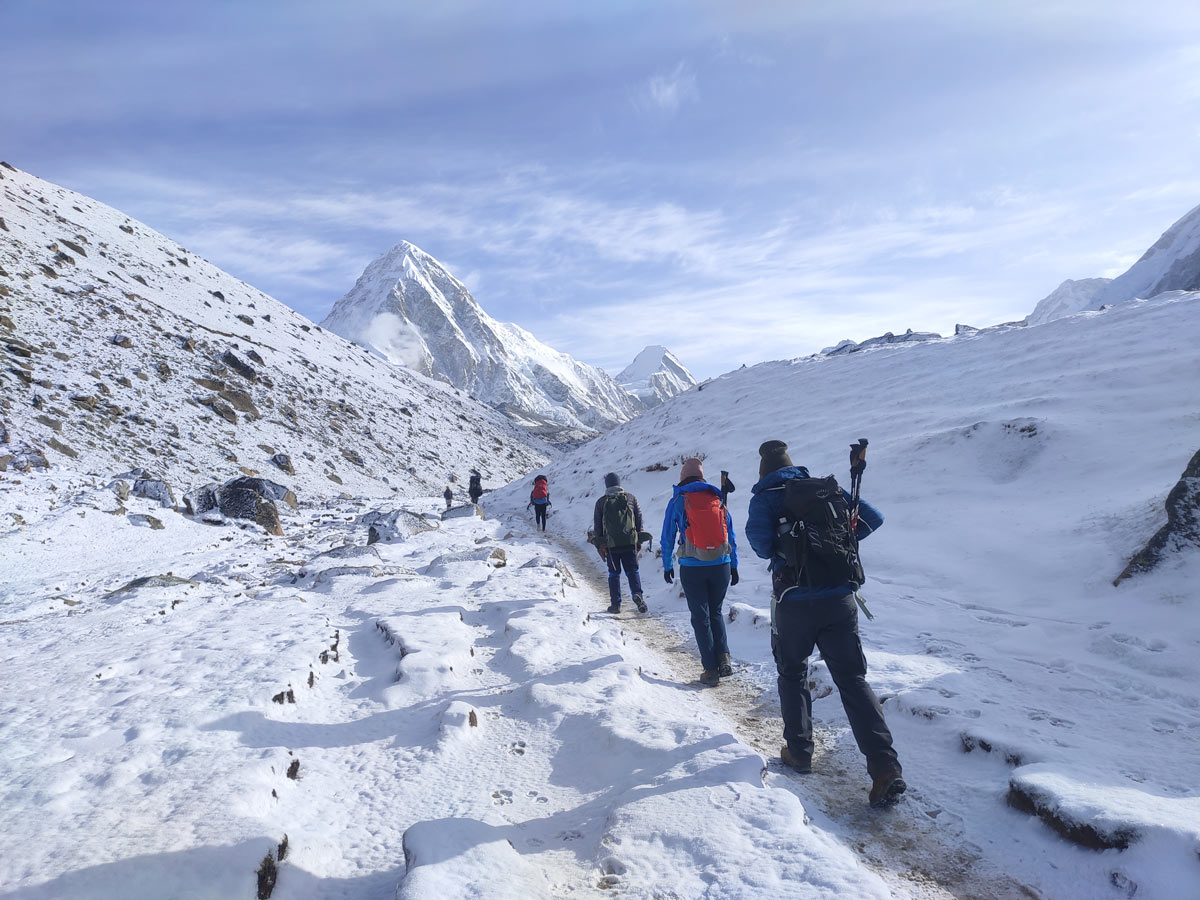Nestled amidst the heart of the Himalayas in Nepal, the Everest Base Camp trek is among the best hikes in the world. This iconic trail has been the dream adventure of intrepid trekkers for a long time now.
While many make their Everest dream come true, many are held back by the thought of the challenges they might encounter during the trek.
And one of those challenges putting the trekkers in a dilemma is the Everest base camp trek elevation gain.
Indeed, conquering the Everest Base Camp trekking is not an easy feat given the challenging altitude range that it features.
However, it is not a factor that should be holding you back as it can be tackled with proper knowledge.
Therefore, in this blog, we have a detailed breakdown of the Everest Base Camp trek elevation gain to dispel your worries and instead prepare you for your dream adventure along with providing some insider tips.
Understanding Elevation Gain
While the numbers concerning elevation gain on the Everest Base Camp trek might look like mere statistics at a cursory glance, it is an important part of the trekker’s journey and demands thorough preparation and understanding.
Simply put, elevation gain refers to the total amount of vertical ascent that you will encounter during the trek. It is measured in feet or meters. In the case of the Everest Base Camp trek, the elevation gain is substantial.
| Day | Start/End Point | Starting Elevation (meters) | Maximum Elevation (meters) | Ending Elevation (meters) | Elevation Gain (meters) |
| 2 | Lukla – Phakding | 2,840 | 2,840 | 2,610 | -230 |
| 3 | Phakding – Namche Bazaar | 2,610 | 3,440 | 3,440 | +830 |
| 4 | Hotel Everest View (round trip) | 3,440 | 3,880 (Hotel Everest View) | 3,440 | +440 |
| 5 | Namche Bazaar – Tengboche | 3,440 | 3,860 | 3,860 | +420 |
| 6 | Tengboche – Dingboche | 3,860 | 4,410 | 4,410 | +550 |
| 7 | Nangkartsang Peak (round trip) | 4,410 | 5,083 (Nangkartsang Peak) | 4,410 | +673 |
| 8 | Dingboche – Lobuche | 4,410 | 4,910 | 4,910 | +500 |
| 9 | Lobuche – Gorakshep – Everest Base Camp – Gorakshep | 4,910 | 5,364 (Everest Base Camp) | 5,140 | +230 |
| Lobuche – Gorakshep | 4,910 | 5,140 | 5,140 | +230 | |
| Gorakshep – Everest Base Camp (round trip) | 5,140 | 5,364 | 5,140 | +224 | |
| 10 | Gorakshep – Kala Patthar – Gorakshep – Pheriche | 5,140 | 5,555 (Kala Patthar) | 4,240 | +415 |
| Kala Patthar (round trip) | 5,140 | 5,555 | 5,140 | +415 | |
| Gorakshep – Pheriche | 5,140 | 5,140 | 4,240 | -900 | |
| 11 | Pheriche – Namche Bazaar | 4,240 | 4,240 | 3,440 | -800 |
| 12 | Namche Bazaar – Lukla | 3,440 | 3,440 | 2,840 | -600 |
The trekking distance from Lukla to Everest Base Camp, which spans approximately 65 kilometers (40 miles), entails covering an elevation difference of more than 2500 meters (8,202 ft).
Therefore, it is important to know the challenges and prepare accordingly.
Everest Base Camp Trek Elevation Profile
The Everest Base Camp trek is not just a journey across distances but also a rollercoaster traversing across a variety of elevations. For a successful and enjoyable experience, understanding the elevation gain is crucial.
In this section, we delve into the elevation profile of the Everest Base Camp trek along with key landmarks on each section of the trek, allowing you to understand what to expect each day during your EBC adventure and prepare accordingly.
Lukla to Phakding
The beginning of the trekking to Everest Base Camp is marked by a scenic flight to Lukla, the gateway to Everest, which also holds the reputation for being the most dangerous airport in the world.
The altitude at Lukla is high in itself, especially for people coming from low-altitude regions. Already starting at an elevation of 2,840 m (9,317 ft) in Lukla, the Everest Base Camp trek is truly a trek for adventurers.
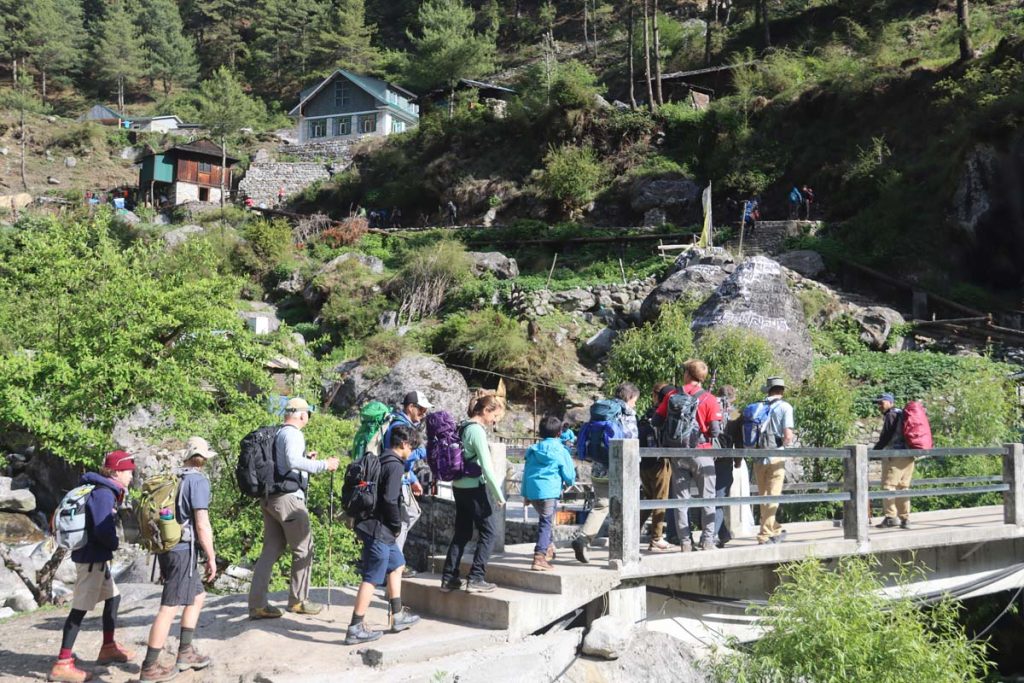
Contrary to many other treks, the initial leg of the Everest Base Camp trek begins with a gentle descent as the trekkers make their way to Phakding at 2,610 m (8,563 ft). This allows the trekkers to ease into the rhythm of trekking.
Followed by the gentle descent alongside the Dudh Koshi River, the final part of this section features a slight ascent from Ghat to Phakding giving you a scenic introduction to the diverse landscapes of Sagarmatha National Park after an elevation loss of 230 m.
Phakding to Namche Bazaar
This section of the trek introduces you to the first major ascent as you make your way towards the bustling Namche Bazaar from Phakding. Continuing along the Dudh Koshi River, you come across a series of breathtaking suspension bridges including the Hillary Bridge.
Accompanied by the distant glimpses of Everest, you continue your ascent to cross villages like Monjo and Larja to finally reach Namche Bazaar after an ascent of around 3 hours.
Starting from an elevation of 2,610 m, you conclude at 3,440 m (11,286 ft) at Namche Bazaar which means an elevation gain of more than 800 meters. Following this significant gain, you will rest and acclimatize at Namche Bazaar to prepare for the journey ahead.
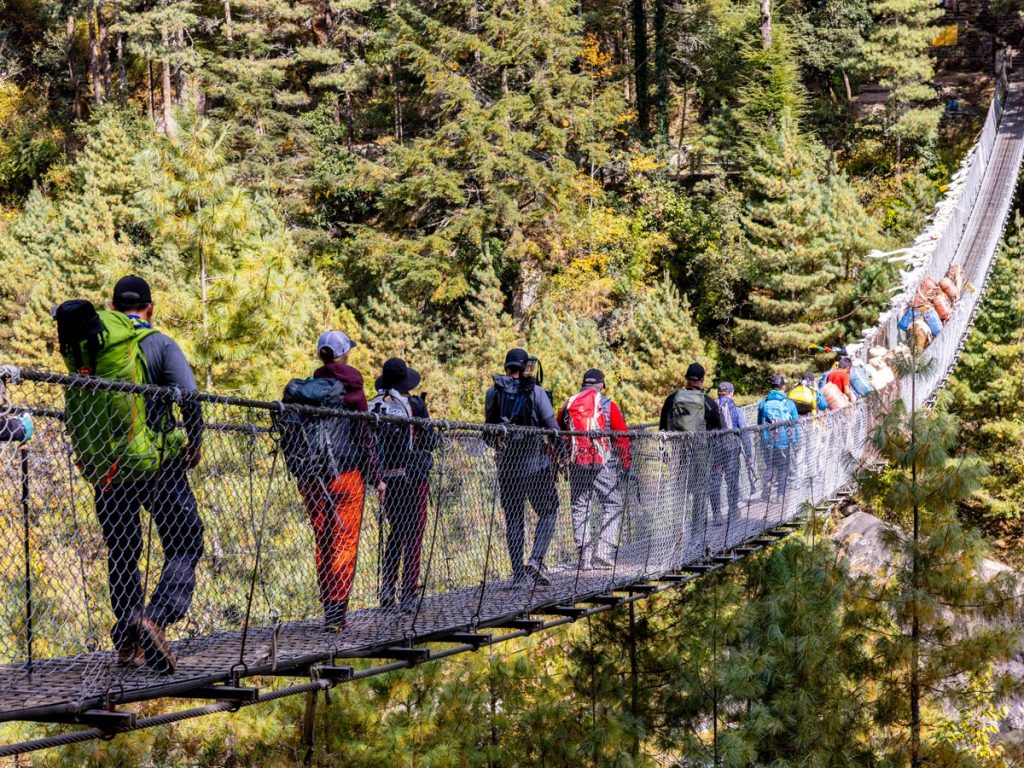
Your next day will be spent acclimatizing at this vibrant hub of Sherpa culture where you can explore the local market and museums. Besides that, an acclimatization hike to Hotel Everest View allows you for quicker acclimatization.
This hike takes you to 3,880 m (12,729 ft) and brings you back to Namche Bazaar giving your body a taste of the high altitude.
Namche Bazaar to Tengboche
Upon proper acclimatization at Namche Bazaar (3,440 m), a spiritual ascent commences featuring more substantial elevation gain as you make your way to Tengboche. This leg of the trek takes you to Kenjoma.
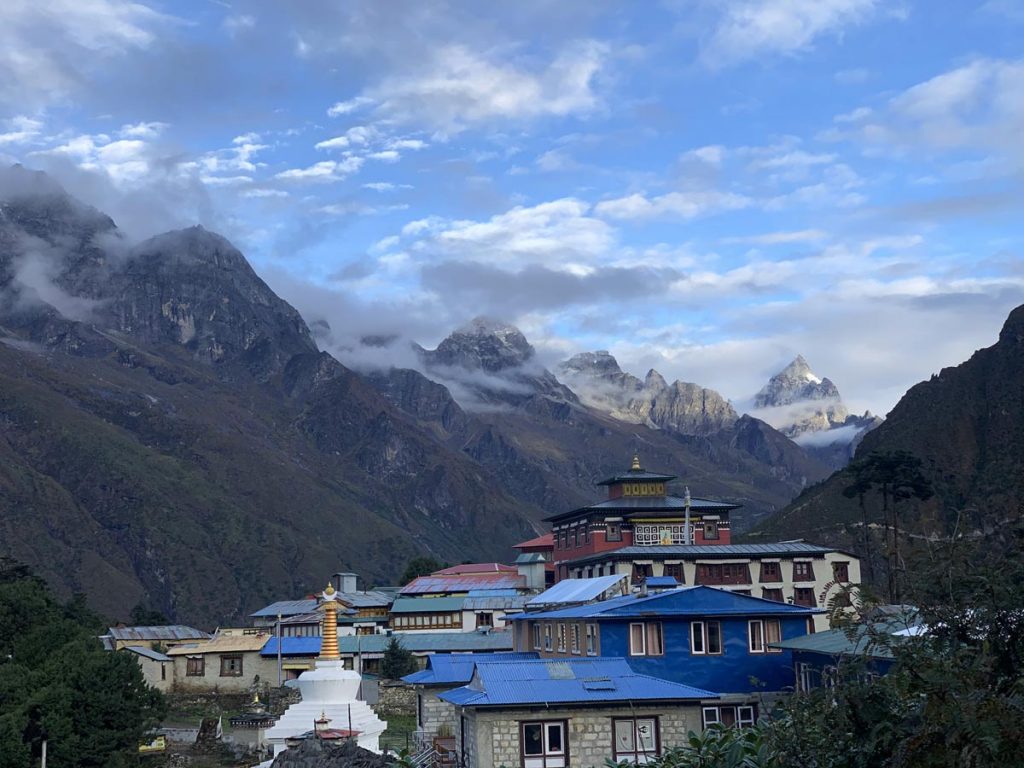
From Kenjoma, you will come across a gentle descent to reach Phunke Tenga along the dramatic yet vibrant trail adorned with rhododendron forests. After ascending around 420 meters, you will reach the picturesque village of Tengboche.
This village located at 3,860 m (12,664 ft) is home to the famous Tengboche Monastery where you get a spiritual respite amidst the adventurous journey. You will also get spectacular views of Ama Dablam, Lhotse, and Everest from Tengboche.
Tengboche to Dingboche
Continuing towards Dingboche, the trail widens and gives glimpses of the expansive valleys of the Khumbu region. This segment begins with a gentle descent towards Pangboche where you come across suspension bridges again.
A mild ascent from there takes you to Somare after crossing the tree line marking an important elevation gain in the EBC trek. From Samare to Dingboche, the landscapes transform into rugged and barren ones signifying the high altitude.
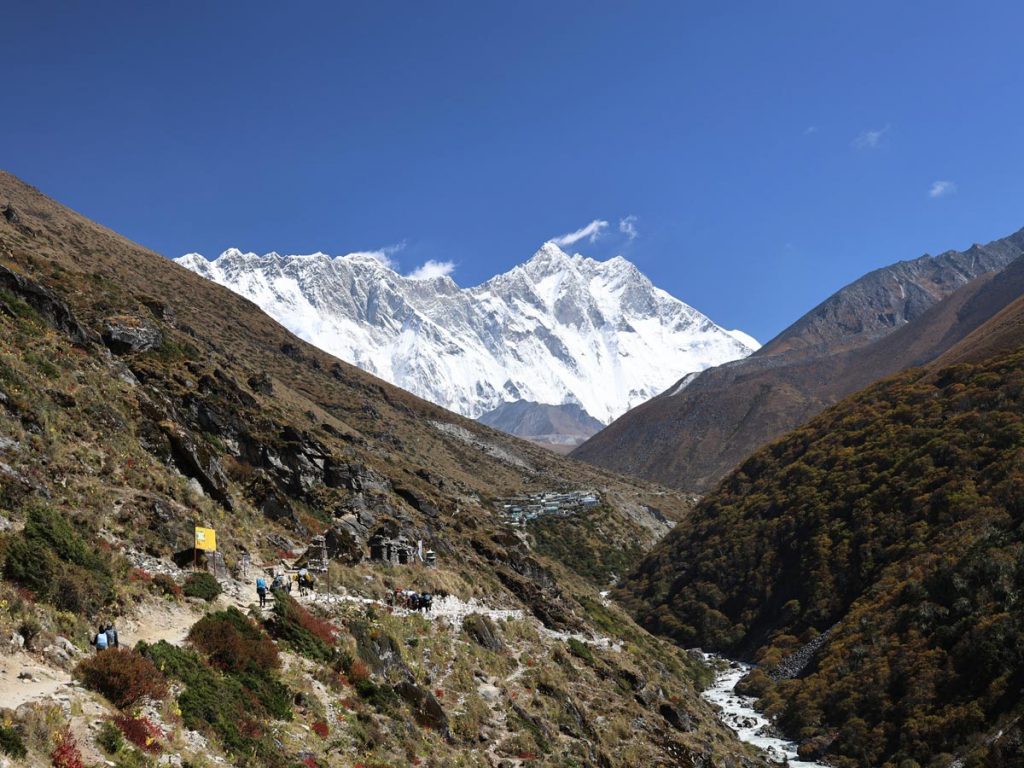
From Tengboche at 3,860 m to Dingboche at 4,410 m (14,468 ft), you will cover an elevation gap of 550 meters. Being a significant gain, Dingboche also serves as a crucial acclimatization point on the Everest Base Camp trek.
While at this serene village, you can go for a high-altitude acclimatization hike to Nangkartshang Peak at 5,083 m (16,676 ft) giving you a taste of the adventure that awaits you. However, ascend slowly as you will be going more than 600 m higher.
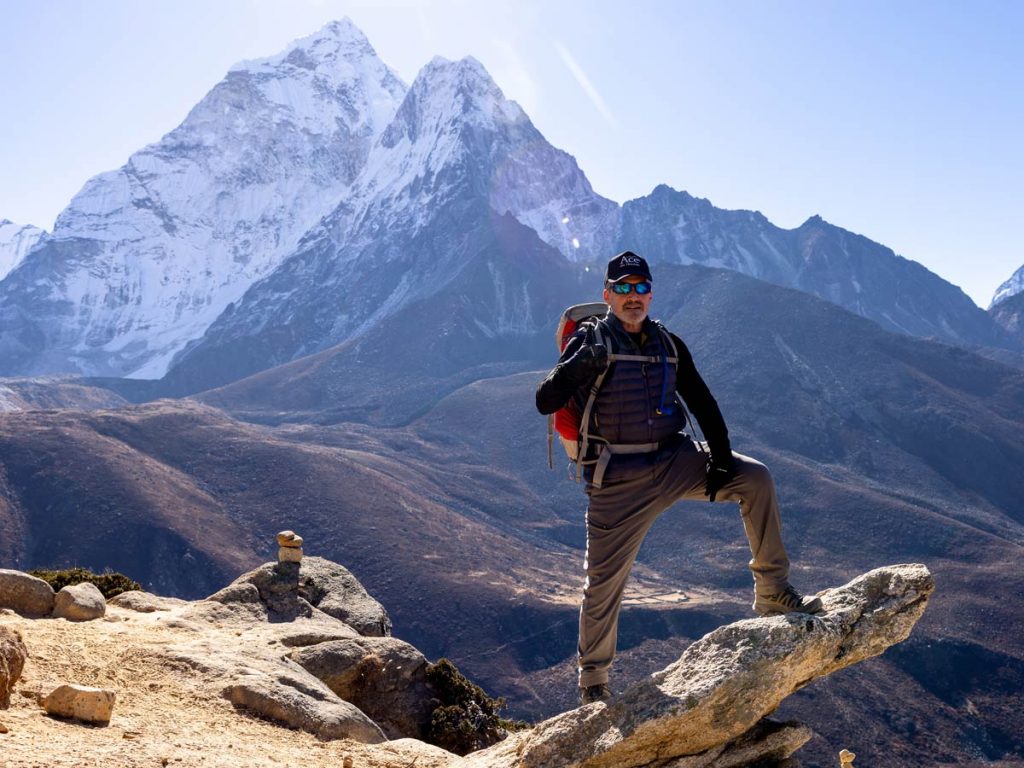
You will witness breathtaking panoramas of Lhotse (8,516m), Nuptse (7,861m), Cho Oyu (8,188m), Ama Dablam (6,812m), Peak 38 (7,590m), Makalu (8,481m), Kusum Kanguru (6,367), and Baruntse (7,163m) and make your way back to Dingboche.
Dingboche to Lobuche
Taking you closer to the jewels of the Himalayas, the segment from Dingboche to Lobuche starts with an ascent alongside the Khumbu Khola towards Thukla and finally reaches the Thukla Pass at 4,830 m (15,846 ft).
The experience here is humbling as the Thukla Pass features many memorials of those who have perished on Everest and this segment serves as a reminder of the power of nature.
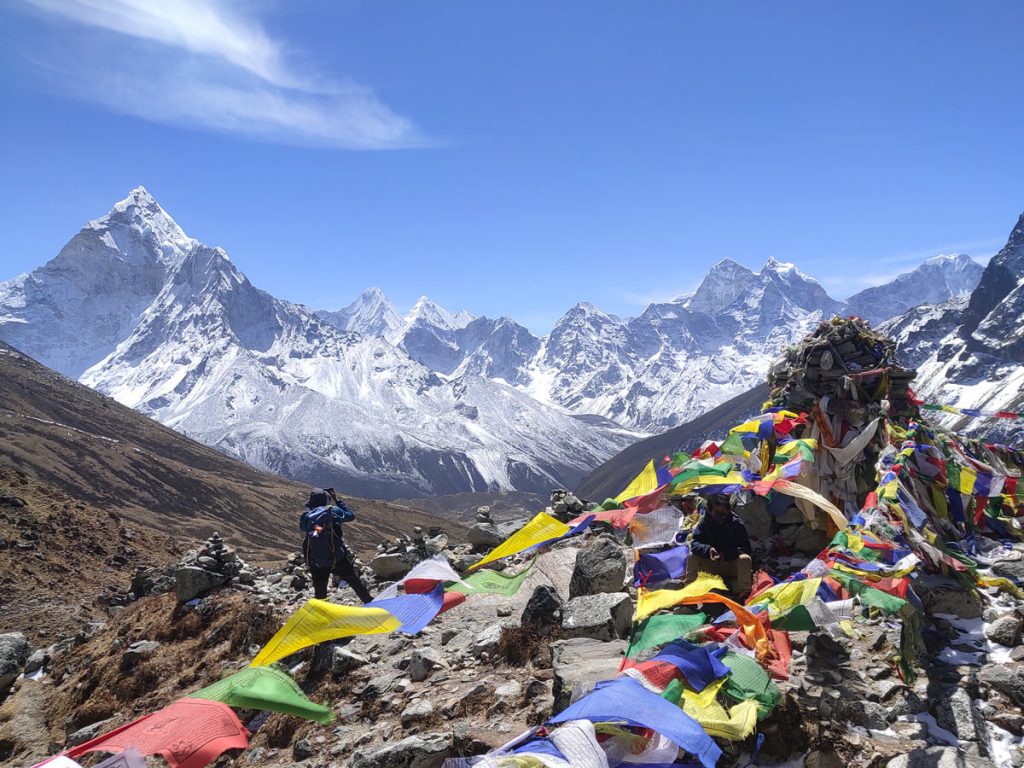
With thinned-out vegetation and thinner air, you reach Lobuche at 4,910 m (16,109 ft) where you get glimpses of the Khumbu glacier. The total elevation gain from Dingboche (4,410 m) to Lobuche is 500 meters.
While at Lobuche during your final rest before preparing to conquer the EBC, you can enjoy the majestic views of Nuptse, Changri, Pumori, Lho La, and more.
Lobuche to Gorakshep and Everest Base Camp
The final leg of your ascent on the Everest Base Camp trek is marked by the trek from Lobuche to Gorakshep followed by the trek to Everest Base Camp which is the pinnacle of this beautiful trek.
The ultimate test of endurance and stamina begins with your ascent towards Gorkshep at 5,140 m (16,863 ft) covering an elevation gap of 230 meters from Lobuche. At Gorakshep, you start seeing majestic views of the Khumbu Glacier and Khumbu Icefall.
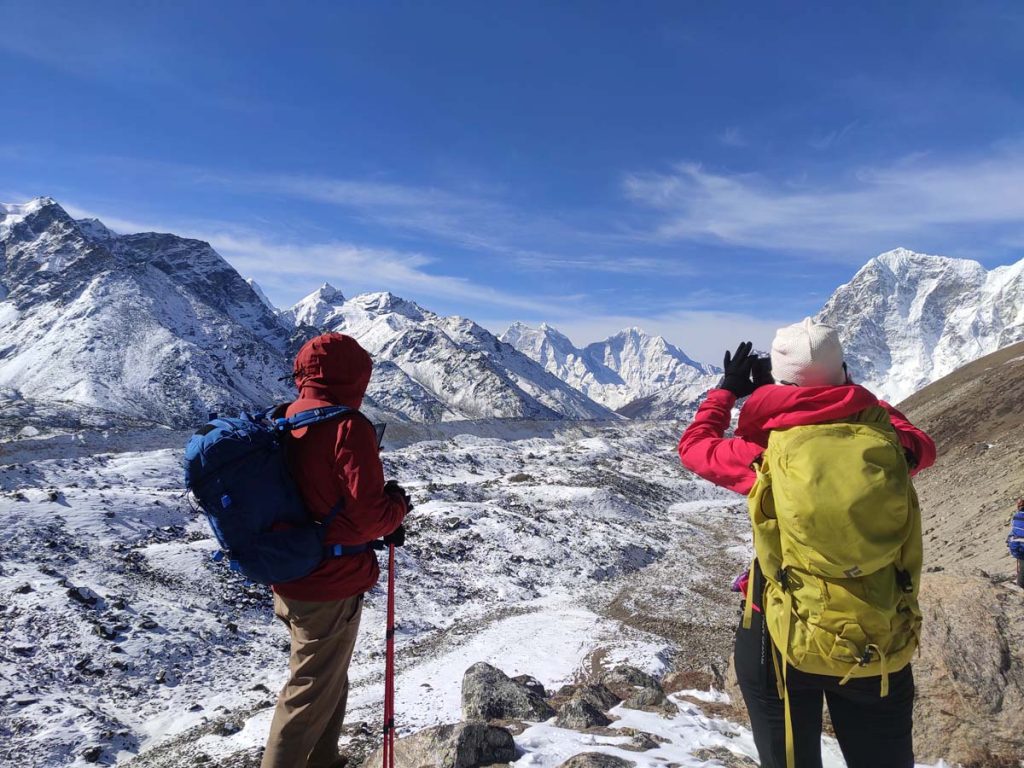
From Gorakshep, you follow an undulating, fluctuating, and rocky trail taking you all the way to the Everest Base Camp at 5,364 m (17,598 ft). The feeling of standing at the base of the highest peak in the world is truly unmatched.
Along with being humbling, the experience is truly majestic and gives you a feeling of achievement. You are treated to the spectacular panoramas from the EBC and the dramatic, yet stunning landscape blanketed in snow.
The total elevation gain for this day is 454 meters. However, you return back to Gorakshep and spend the night there, so your day is full of ascents and descents.
Gorakshep to Kalapathhar
Although optional, the journey from Gorakshep to Kalapathhar makes a usual appearance in the itinerary for Everest Base Camp. This is even more challenging as you will be going higher than the Everest Base Camp.
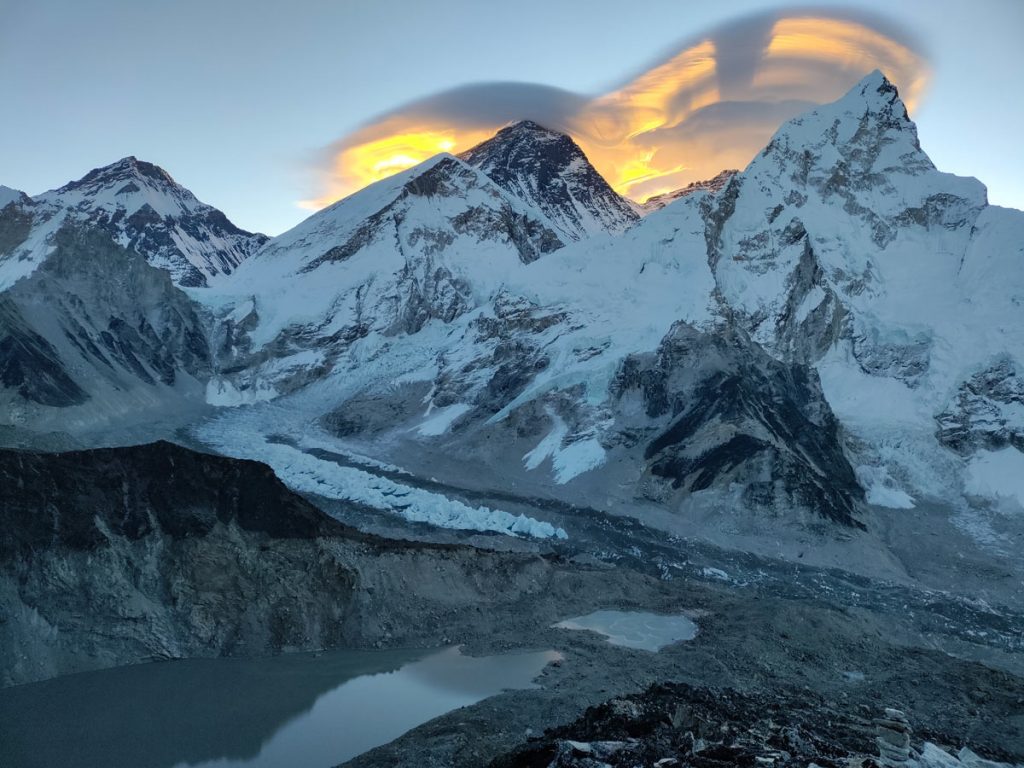
Following the steep uphill and rocky trail, you reach Kalapathhar at 5,555 m (18,225 ft) from Gorakshep. During this, you cover an elevation gain of 415 meters to get rewarded with gorgeous views from this vantage point.
On the same day, you will experience a massive elevation loss as you retrace your steps back to Pheriche at 4,240 m (13,911 ft).
Return Journey and Elevation Loss
The return journey is not as challenging because despite covering big sections of the trail, you will be descending in terms of elevation, and it poses no risk to your health.
The elevation loss is quick as you go to Pheriche (4,240 m) from Kalapathhar (5,555 m) and then to Namche Bazaar (3,440 m) followed by Lukla (2,840 m).
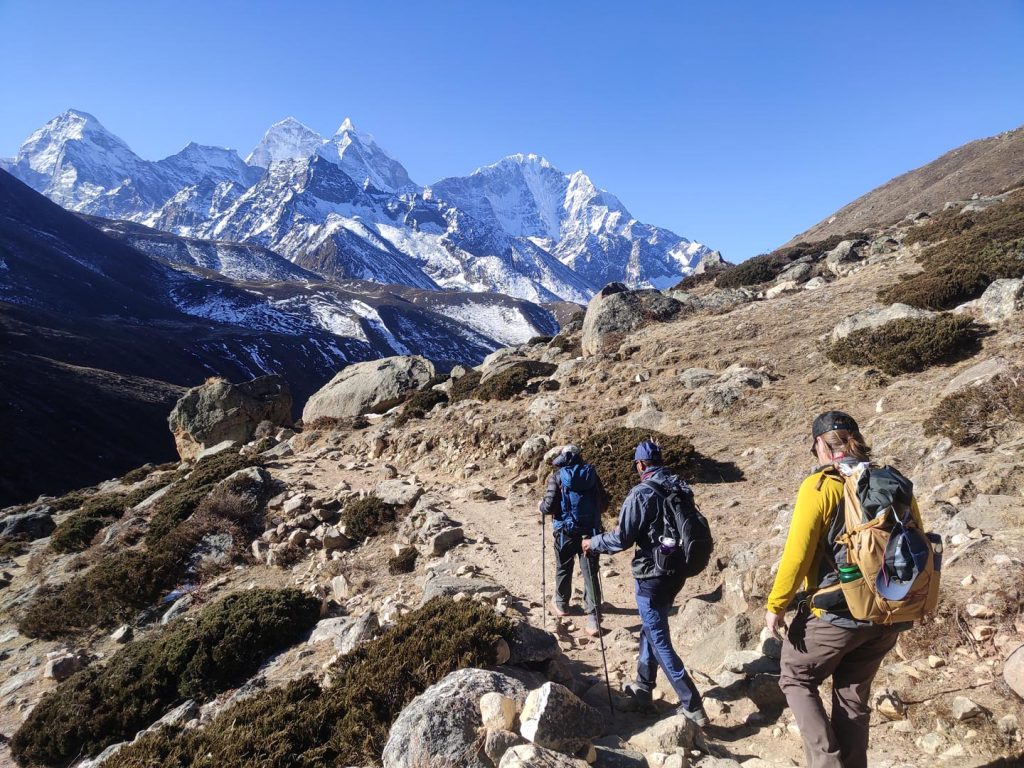
You will return through the same trail, and it allows you to reflect on your entire journey while experiencing some more of the local culture and cuisine.
The elevation profile mentioned in this blog is based on the standard itinerary of the Everest Base Camp trek. It might vary depending on your itinerary and the route chosen as there is more than one way to reach the EBC.
Effects of Altitude on Body
Ascending towards a higher altitude means entering the realm of thin air with less and less availability of oxygen as you go higher. This decrease in oxygen per breath can lead to a condition called hypoxia which further leads to altitude sickness.
Also known as acute mountain sickness, altitude sickness features a range of symptoms like shortness of breath, headache, fatigue, nausea, dizziness, loss of appetite, loss of sleep, and an increased heart rate.
Besides acute mountain sickness (AMS), it can also lead to other altitude-related conditions like High Altitude Pulmonary Edema (HAPE), High Altitude Cerebral Edema (HACE), and more.
While these symptoms begin with a mild effect, they can worsen with elevation gain and become even life-threatening if proper measures are not taken to prevent altitude sickness.
Acclimatization Strategies for EBC
Acclimatization is the ability of your body to adjust and adapt to the decrease in oxygen as you gain more elevation. Therefore, for those embarking on the Everest Base Camp trek, the importance of acclimatization cannot be overstated.
However, acclimatization is a gradual process and not a magical switch. Below are some of the strategies that allow you to properly acclimatize during the EBC trek:
- The key to acclimatization is ascending gradually while allowing your body the time it needs to adjust to the gradual elevation gain. This is the reason why two or three days of your EBC trek itinerary are strategically dedicated to acclimatization and resting.
- On the said acclimatization days, go for short hikes at nearby places as it allows you to follow the ‘climb high sleep low’ rule which further helps with acclimatization.
- While on the EBC trek, take proper care of your nutrition and hydration. Drinking lots of water can help your body acclimatize faster. Have a properly balanced diet including high protein snacks. Avoid alcoholic drinks.
- Listen to your body and trek at a gentle pace. Don’t over-exert yourself. Instead, take more days if need be.
- Although altitude sickness can hit anyone despite the physical fitness, preparing in advance can enhance your cardiovascular health which can help you adjust to the low oxygen level.
- If your symptoms worsen, descend to a lower altitude and rest well. You can continue the trek once you are fit again.
Preparation for Everest Base Camp Elevation Gain
- Start physical preparation well in advance and stick to a regimen that focuses on your cardiovascular health, stamina, and endurance. Go for activities like swimming, cycling, and running.
- If possible, go for shorter hikes as a part of altitude training taking you to a higher altitude than where you stay. This induces conditions similar to the trek and allows your body to adjust.
- Research well about the challenges regarding altitude and study the symptoms of altitude sickness for mental preparation. Read about tips to prevent altitude sickness like acclimatization.
- Include suitable gear and accessories in your packing list for the Everest Base Camp trek to avoid any added challenges with the elevation.
